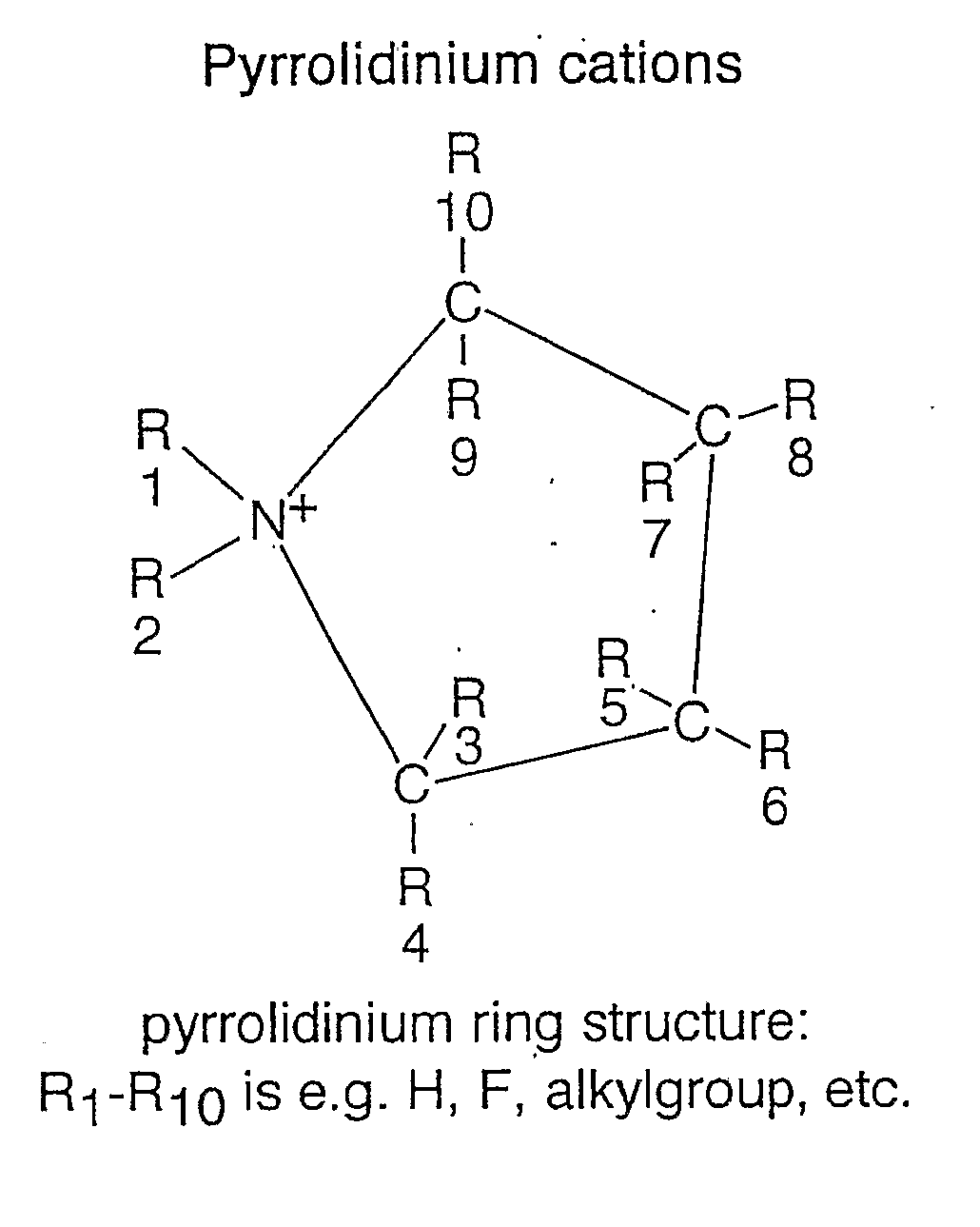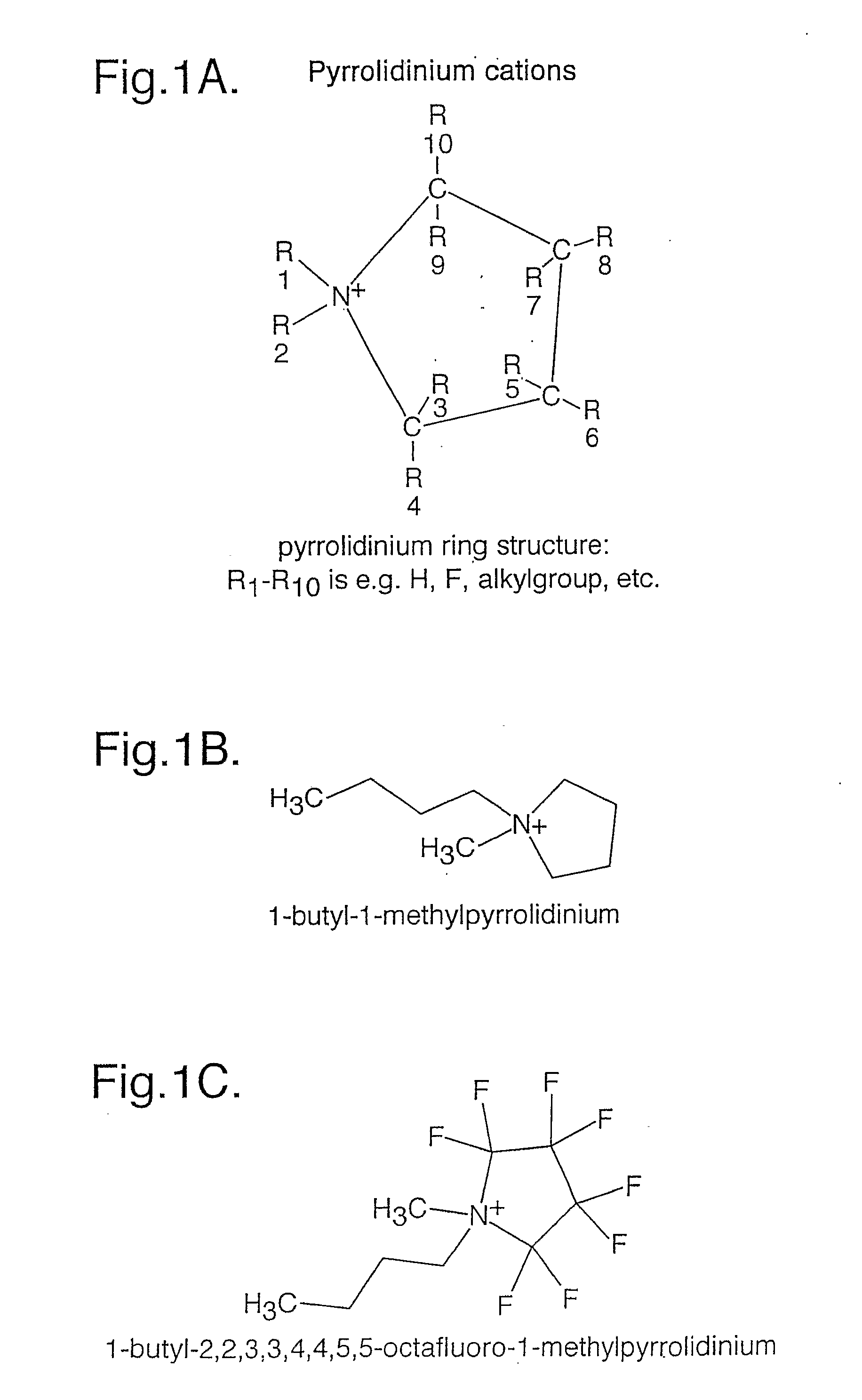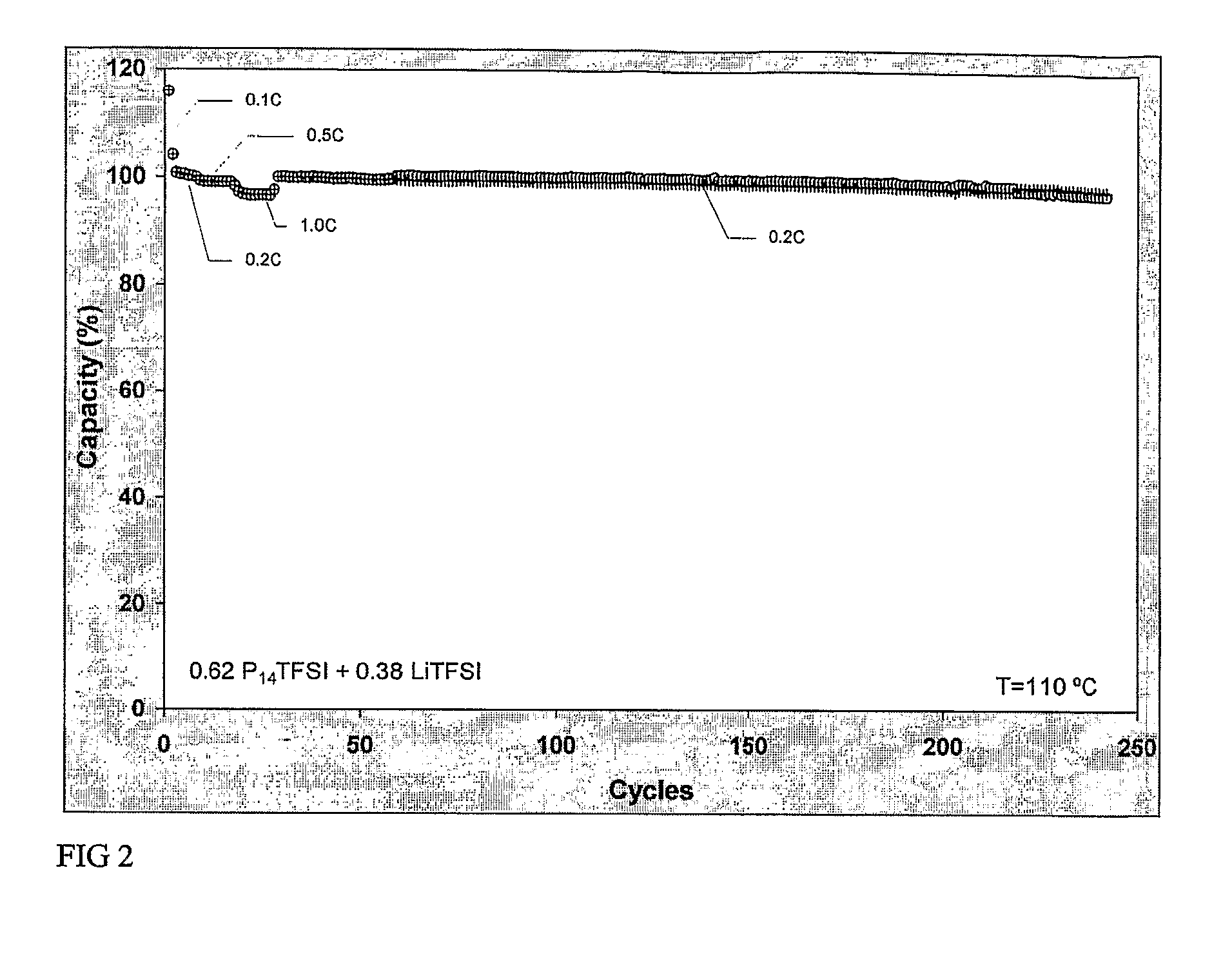Electrochemical Element for Use at High Temperatures
a technology of electrochemical elements and high temperature, applied in the field of electrochemical elements, can solve the problems of loss of capacity, inconvenient reversible use of intercalation materials with an upper reversible potential limit of more than 4 v versus li/li+, etc., and achieves better performance of electrochemical elements, lower ionic conductivity, and higher power density
- Summary
- Abstract
- Description
- Claims
- Application Information
AI Technical Summary
Benefits of technology
Problems solved by technology
Method used
Image
Examples
example i
[0083]“Testing at 110° of a rechargeable battery with a Li4Ti5O12 cathode, a Lithium metal anode and an electrolyte comprising LiTFSI in P14TFSI”
[0084] A coincell was made according to the procedures described above. Li4Ti5O12 was used as the cathode material with PvdF as binder on an Aluminium current collector. The electrolyte was a mixture of LiTFSI dissolved in P14TFSI in the molar ratio of 0.38:0.62. The cell was cycled 242 times between 1.0 and 2.0 V at 110° C.
[0085] In the first 29 cycles the current was varied between 0.1 and 1.0° C. FIG. 2 shows the capacity for discharging and charging as percentage of the expected sample capacity. Very stable cycling behaviour of the battery was found with good rate capability and high efficiency. The voltage curves in FIG. 3 show the typical voltage curve of Li4Ti5O12 versus lithium for the 7-th, 107-th and 207-th cycle for the same current density indicating that the active material did not change and did not loose its integrity.
example ii
[0086]“Testing at 110° C. of a rechargeable battery with a Li4Ti5O12 cathode, a Lithium metal anode and an electrolyte comprising LiTFSI in P16TFSI”
[0087] A coincell was made according to the procedures described above. Li4Ti5O12 was used as the cathode material with PvdF as binder on an Aluminium current collector. The electrolyte was a 2.0 mol / kg mixture of LiTFSI dissolved in P16TFSI. The cell was cycled 150 times between 1.0 and 2.0 V at 110° C.
[0088] In the first 29 cycles the current was varied between 0.1 and 1.0° C. FIG. 4 shows the capacity for discharging and charging as percentage of the expected sample capacity. Very stable cycling behaviour of the battery was found with good rate capability and high efficiency.
example iii
[0089]“Testing at 110° C. of a rechargeable battery with a TiS2 cathode, a Lithium metal anode and an electrolyte comprising LiTFSI in P14TFSI”
[0090] A coincell was made according to the procedures described above. TiS2 was used as the cathode material with PvdF as binder on an Aluminium current collector. The electrolyte was a mixture of LiTFSI dissolved in P14TFSI in the molar ratio of 0.40:0.60. The cell was cycled 13 times between 1.8 and 2.5 V and 87 times between 1.5 and 2.5 V at 110° C.
[0091]FIG. 5 shows the capacity for discharging and charging as percentage of the expected sample capacity. The lowering of the lower cut-off voltage increased the capacity substantially. Apart from some initial fading the cycling is fairly stable and with high efficiency. The voltage curves in FIG. 6 shows the typical voltage curve of TiS2 versus lithium for the 50-th cycle.
PUM
 Login to View More
Login to View More Abstract
Description
Claims
Application Information
 Login to View More
Login to View More - R&D
- Intellectual Property
- Life Sciences
- Materials
- Tech Scout
- Unparalleled Data Quality
- Higher Quality Content
- 60% Fewer Hallucinations
Browse by: Latest US Patents, China's latest patents, Technical Efficacy Thesaurus, Application Domain, Technology Topic, Popular Technical Reports.
© 2025 PatSnap. All rights reserved.Legal|Privacy policy|Modern Slavery Act Transparency Statement|Sitemap|About US| Contact US: help@patsnap.com



